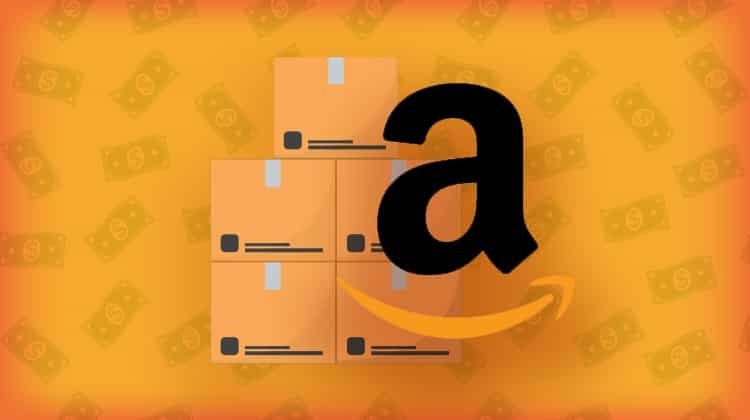
Amazon Advertising 101: Everything You Need to Know
by Brad Hunt • November 1, 2018
by Brad Hunt
Is Amazon taking over the world? Maybe…
We are a consumerist society here in 2018, but Amazon has truly fed the beast! I mean, let’s be real, I think most of us have shamefully had our recycling bins overflowing into our neighbor’s yard due to empty Amazon boxes. To add to the mix, Amazon’s ad business is blowing up in 2018 and benefiting many businesses!

Since Amazon has truly changed the way we shop, it’s ambitious drive into digital-advertising will supercharge the company’s expansion into the digital world! While Google and Facebook can only infer buying intentions, Amazon has loads of first-hand consumer purchasing data that can be used to improve their ad target across the entire purchasing funnel.
With many businesses turning to advertising options with the best optimization, analytics and exposure, Amazon might be a great fit! If you are new to the advertising platform of Amazon or want some help, let’s learn everything you need to know to benefit your business!
What is Amazon Advertising?
Simply put, advertising on Amazon is much like advertising on Google Ads.
When you type in a keyword in the Amazon search box and results appear, some of the top results will be sponsored posts—these are considered Amazon Ads. They are denoted with subtle “sponsored” or “ad” text. So for example, if I am looking to buy Icelandic soap I would get the following ad banner in the picture below:
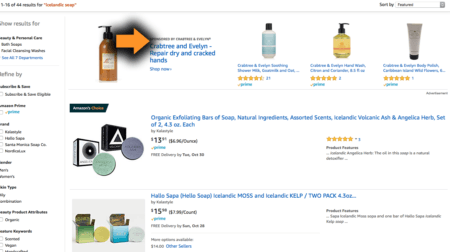
Advertisers who want to gain more visibility to their products on Amazon can pay for these positions by bidding on specific keywords, which will lead to higher visibility in the Amazon SERPs. The advertiser will then be charged when a shopper clicks on their ad. You can essentially see Amazon’s advertising platform as the Amazon version of Google Ads.
Amazon ads can also appear on individual product pages.
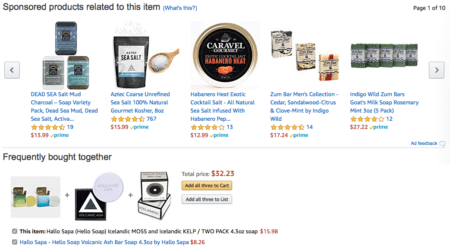
So, like Google Ads, Amazon has lots of ways you can connect your products to relevant customers who are actively looking for products like yours! If you want to look at Amazon options yourself check out more of Amazon’s advertisement options click here. To learn more about the advertisement policies click here.
Why Amazon Advertising
There are 300 million Amazon users and it’s estimated that 80 million Americans are Amazon Prime members! 80 MILLION! In fact, more American households have Amazon Prime accounts than attend church regularly or have a landline phone!
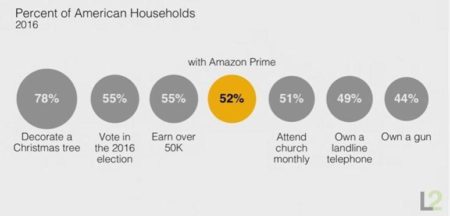
With so many people buying on Amazon, they have collected loads of data about Amazonian shoppers through our shopping and purchasing habits. Amazon has real power because it knows what people are buying and how they’re doing it!
So, wouldn’t Amazon be a great way to advertise your products? Probably!
If you’re all over Google Shopping, the Display Network, Facebook and Instagram, well, there’s no better time to break into one of the largest remaining online ad networks. For ecommerce businesses, Amazon ads should be a no-brainer.
The Amazon advertising landscape is dominated by three acronyms: AMG, AMS and AAP/DSP. In the next section, we will breakdown the advertising products available from Amazon.
Amazon Acronym Deciphering
AMG, AMS, AAP, ACoS… Trying to keep track of all these Amazon advertising acronyms is enough to make anyone’s head spin. But brands and advertising agencies alike are learning the new language of Amazon advertising as it is set to start competing more directly with Facebook and Google.
So, let’s take a look at some of the Amazon acronyms and their digital advertising language.
AMS
Amazon Marketing Services is a suite of pay-per-click (PPC) performance advertising products available to advertisers via self-service portals. AMS offers three different types of PPC products: Sponsored Products, Headline Search Ads, and Product Display Ads.
Advertisers set up and manage campaigns using these ad products either through the AMS dashboard (for Vendors) or via their Seller Central account (for marketplace Sellers). Amazon Storefronts are a recent addition to the suite and offer a way for brands to merchandise their product assortment on stylized landing pages.

AAP/DSP
Amazon Advertising Platform is Amazon’s Demand Side Platform (DSP) and is available as a managed service from Amazon directly, or self-service through accredited agencies. It enables advertisers to reach Amazon’s audiences on third party sites and apps through ad formats, including:
- Desktop and mobile web display ads
- Mobile banner ads
- Mobile interstitial ads
- Video ads
A DSP media buy is the only way advertisers can specifically target Amazon shoppers off of Amazon and AAP is also the only way advertisers can buy ad space on Amazon’s own websites.
DSP campaigns can be effective with building brand and product awareness. But if a company’s intention is to spend on advertising with a direct impact on sales, AAP may not be the most effective use of their marketing dollars. It’s more suited to companies who understand the nature of brand advertising and are already running display ads on other platforms.
You can choose how to manage your campaigns—either by working with our campaign management services or managing them yourself.
Where do AMS and AAP Fit in Your Marketing Funnel?
AMS and AAP are very different advertising solutions offered by Amazon and each platform has its own specific advantages depending on the buyer phase you are targeting in the marketing funnel.
This means depending on where your customer is in the funnel, there will be times where AMS campaigns or AAP campaigns will be more effective for targeting precision:
- AMS campaigns are very effective for lower funnel sales conversion, where the customer is already at the point of purchase.
- AAP offers ad products across the entire marketing funnel and is particularly relevant for top of funnel targeting, where attention for products/brands must first be created. AAP’s extended ad coverage across the entire funnel makes the platform particularly interesting for products that have a longer purchasing journey.
Now that you understand the two advertising solutions that Amazon offers, let take a look at the different types of advertisment options you can create on the Amazon platform.
Types of Amazon Ads
So you have some nice banner ads for branding purposes from your creative team that you’d love to promote, but you’re also looking to simply drive more ecommerce sales with Google Shopping like ads.
Luckily, you’ve come to the right place because Amazon provides options! There are three main types of ads you can configure through Amazon including sponsored products ads, headline search ads, and product display ads.
Let’s take a look at some of the advertising options available to you!
Sponsored Ads
Sponsored ads—such as Sponsored Products and Sponsored Brands (formerly known as Headline Search Ads)—allow you to reach Amazon customers as they research and discover products. These ads help vendors promote item listings, pairing them with items potential customers are already looking at.
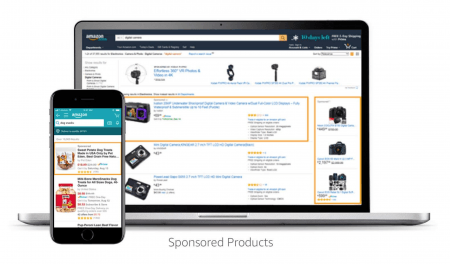
Ads appear on search results pages and relevant product pages, directing customers to your product detail page or Store. It’s easy to get started:
- Select the products you want to advertise
- Set your budget
- Choose a combination of keywords, products, and product categories you want to target
Once you get started, it’s good to know why these ads will be helpful. Sponsored ads have a lot of benefits to them as they:
- You Only Pay for Performance: You’re not charged until a customer clicks your ad, and you always control your campaign budgets.
- Create Stability, Not Guessing: Amazon will suggest keywords to bid on, or you can target products similar to yours.
- Allow You to See Insights: Monitor ad performance and optimize to drive results by changing keywords or adjusting bids as needed.
Display Ads
Display ads use relevant audiences, customizable creatives, and actionable insights to deliver your message to the right customers—on Amazon sites, apps, devices, and third-party sites. You can either manage campaigns yourself through the Amazon DSP console or work with their team of experts.
Your display ads are not limited to just Amazon.com but to many of their other involved sites like:
- Amazon-Owned & Operated Site
- The Amazon Network
- Amazon Devices
If you like Display ads, it’s good to know that they have:
- Reach: Reach customers on or off Amazon, on desktop, mobile, or a range of Amazon devices—whether or not you sell on Amazon.
- Flexibility: Deliver memorable brand moments and inspire customers to take action through a variety of creative formats and storytelling vehicles.
- Relevant Audiences: Reach your ideal audience using insights based on first-party shopping behaviors.
- Headline Search Ads: Headline search ads display in the search result pages as headline banner ads always above the result listing. These ads are cost-per-click and lead searchers to any specified page on Amazon.
Video Ads
Video ads empower you to tell stories and make emotional connections with customers throughout their decision journeys. We help you reach your ideal audience in brand-safe environments and measure the results of your video campaigns.
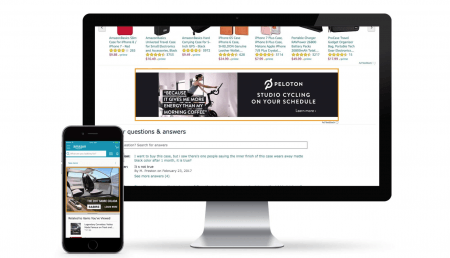
Your advertisements will appear not only on the Amazon shopping platform—they can also be featured in Amazon Echo and other operated sites!
Since video advertising is skyrocketing across marketing efforts everywhere, it might be good to see how it can help you:
- Brand Awareness: Embed your brand message within high-quality content on Amazon sites like IMDb, devices like Fire TV, and across the web.
- Relevant Reach: Go beyond traditional TV ads to share your brand message with relevant customers in the many places they consume content.
- Display Ads to Match: Make connections with customers by pairing video with your display ads to showcase your brand message or demo your products and services.
If you want to start your Amazon Advertising today, click here to get set up and then take a quick gander at the setup section below!
Amazon Advertisements: Setup and Getting Started
Like every other type of ecommerce platform, you will need to set up a personal listing and business platform on Amazon to run ads. Amazon will sign you up with a seller or vendor account that will be the hub for your ecommerce business.

If you don’t have either of these accounts, you can check out their various pricing and plans to fit your needs here.
If you’re a first-party seller, you’ll want to sign-up as a vendor, which is unfortunately by invitation only. If you’re selling via Amazon Seller Central you’re considered a third-party seller.
Seller Central has pay-as-you-go pricing options for independent sellers vs. a pro option for those with higher sale volume. Pro merchant sellers also have the option of letting Amazon manage shipping, returns, and customer service, which is not a bad perk! Lastly, Amazon has a Vendor Express option that you’ll want to look at to get around the “invitation only” limitation to be a vendor.
Once you’re set up you can start advertising and making some sales!
Should You Advertise on Amazon?
Are you selling products online? If the answer is “yes”, then you should be advertising on Amazon!
Amazon will just give you another avenue to get more eyes on your products and likely more buyers.
If you’re hesitant, then start small with a product that you already know sells well online. Once you start to see an ROI, expand your campaign.
Another compelling reason to use Amazon Advertising is the fact that it can increase and improve your organic Amazon rankings! Sales history is a very strong ranking factor. If a product sells better, then Amazon will place it higher up in the ranking of search results.
So, not only is it possible to boost your product sales by investing in Amazon ads, but it could also boost the organic rankings of your products. Could it honestly get any better?
Amazon Advertising Costs
So, if you are more concerned with the bottom line, considering you are already spending your marketing budget elsewhere, how much do ads on Amazon run?
According to Rob Sieracki at Practical Ecommerce, the average cost per click on Amazon is rarely more than $0.35, making it more cost-effective on a CPC basis than search ads on Google Ads or Bing Ads and comparable to some of the lowest CPC’s on Facebook ads or Google display. Considering that Amazon searches show a lot of commercial intent, those are promising numbers!
So, after being well informed on Amazon Advertising, and you feel like it’s the right fit or your business marketing, here are a few tip to optimize your efforts!
How to Optimize Your Amazon Ads
So, Amazon is a big platform…
You might be doubting your ability to make money because of the sheer numbers. I mean, how could your products stand out in the great sea of Amazon products people love?

Luckily, there are a few Amazon marketing tips you can implement to help you stand out from the competition. Let’s take a look at ways you can optimize your Amazon advertising efforts!
Display Beautiful Visuals & Product Photography
Visuals matter! Why?
The average attention span of your customers is 6-8 seconds, so that means you only have a few seconds to grab a new customer’s attention. That means you need to sell people on the benefits of your products in the quickest possible way.

Images are your customers’ favorite way to absorb information and they are processed 60,000 times faster than text. High-quality visuals and photography are the first experience a potential customer will have with your business, so it’s important you do this well!
To capture buyer interest and land them on your product page (where there is a 15% conversion rate!), spend the time and effort to create high-quality images for your product. You might already have a good setup for your ecommerce website, but Amazon has a few rules for your product photography that you need to follow.
Amazon requires the following from your main product images:
- Main image for your product should only be the product that you are selling, on a white background. This allows for the search results on Amazon to appear clear, uncluttered and uniform.
- Main images should not include accessories that are not included in the purchase. This can be models but also text or badges (no “made in the USA” tags!).
- Depending on your product type and category, Amazon allows 5-9 images for your listing. Make sure these are varying and informative.
While your main product image is required to specifically be against a white background, Amazon allows you to be a bit more creative with the other images you can have.
Other product images could be:
- Your product from different angles
- Product labeling for quality assurance
- Action shots or usage tutorial
- Product features and comparisons
- Product information like size charts
- Products on models
- Scalable shots that help people understand sizing
The sizing on Amazon product listings should be at 2,000 pixels x 2,000 pixels to take advantage of its zoom feature, which allows buyers to scroll over an image to enlarge it.
Once you upload images, make sure you are tracking which ones drive more sales. This may require a bit of testing, so do not be frustrated, you will get it right for your specific needs!
Track the number of sales as well as revenue. If you need to test, try switching the order of your images (especially your main product image) or switch out different content to see what performs best!
Use Effective Ad Copy
Customers come to Amazon for shopping ease. That is why your product listings should be clear, informative and creative. You need to draw their attention and make their shopping experience easy!
Ensure your ad text is not only specific about what you are selling, but try and insert some creativity and humor into your ads if possible.
Standing out is more important than ever amongst the endless search results of Amazon. Instilling a sense of urgency can also be helpful.

Every product page needs a great title, a description and details. All of these components tell a customer what your product is and what it is all about so make sure you are specific, detailed and clear.
When it comes to creating a zippy and meaningful title for your product, Amazon allows about 150-250 characters. So, make sure you are short and descriptive. Again, just listing “French bulldog waterbottle” does not really help your sales nor your brand.
You can squeeze some Amazon marketing magic in your title using keywords. Putting strategic keywords in your title can help your product rank so make sure you utilize some of the character space for keywords.
A successful title should include:
- Brand name/identity
- Name of product
- Any distinguishing features such as color, size or use
- Any keywords you want to rank for
Use Helpful Keywords
We talked a bit already about how Amazon advertising is a lot like Google—keyword strategy is no different on Amazon. You will implement a lot of the same keyword strategy from Google to your Amazon marketing!
Negative keywords are key to reducing wasted spend from irrelevant clicks. I would also implement specific match types and steer away from clear broad matches. The focus should be on phrase and exact match with Amazon keywords!
Brainstorming keywords can be tough but consider the following example. If you are an ecommerce business owner selling umbrellas, you will want to brainstorm and target Amazon keywords related to:
Weather: When people need an umbrella they have to deal with the unfortunate weather. They may have questions about the quality of the umbrella. For example, will the umbrella invert in the wind? Is the material durable, water resistant, etc? So, if I am trying to market my umbrellas, I should create content and descriptions that provide answers to these questions and concerns.

Travel: Umbrellas are sometimes things you pack for trips. You always need to be prepared, so travelers rely heavily on the sizing of products to pack in their suitcases, cars, etc. Keywords that describe sizing and usability like “travel size”, etc could be a good way to catch the eye of these potential customers.
Gender/Age: Umbrellas will have some gender and age distinctions, so it would be good to think about the umbrella products, the sizing and the target user. If you have an adult umbrella, make sure you are not selling to people who want a child’s umbrella. Identify the user with your keywords.
It is also helpful to look at your competitors and see what terms they are using and how you can improve your own searches or implement negative keywords effectively. To find your top competitors, search broad terms you are selling like dog leashes and see which brands appear in the search results.
Look at some of the top profiles and pick apart what they are doing with all aspects of their business and reverse engineer!
If you need extra help, you can use apps like AMZ Tracker. If you have never heard of AMZ Tracker you have seriously missed out! It not only looks at keyword planning but also looks at the competition’s sales as well as keyword tactics that can help your product listings. This can be an invaluable tool when improving your Amazon marketing!
Create Well-Structured Campaigns by Product Category
If you’re an experienced Google Ads advertiser, this is something you’ve likely already mastered. You can use your Google Ads organizational skills to structure your campaigns and ad groups with Amazon’s ad platform.
The best strategy here is to have a separate campaign of each of your main product categories and then under each campaign create ad groups that are more specific. For example, let’s say you sell yoga wear.
You might decide to start with three of your top-selling products:
- Yoga Pants
- Yoga Blocks & Straps
- Yoga Headbands
Under each campaign you should create ad groups around more specific categories, then you’ll want to create a list of relevant keywords for each ad group.
Finally, make relevant ads for each keyword grouping. A unique account structure will ensure your ads are relevant, which will save you money and increase your ROI. This tip is an extremely critical one to reap the benefits of advertising on Amazon.
Bid on Popular Brands That Sell Similar Products
When brainstorming keywords to bid on, don’t forget about your well-known competitors. For instance, if you sell reusable water bottles, you will want to bid on terms like:
- Vapur Water Bottles
- Mira Water Bottles
- Hydo Flak Water Bottles
- Nalgene Water Bottles
These are well-known brands that are commonly searched for and purchased. This will allow you to gain exposure and pursue someone to buy from your “less known” brand. To find your top competitors, do a generic search on Amazon for products in your vertical and see which brands come up the most in your search results.
Experiment with All Ad Formats
While sponsored product ads might appear to yield the fastest and most visible ROI, headline search ads might lead to more loyal, repeat buyers.
It’s worth experimenting with all ad types to see which yields the highest returns and then—once your statistics can paint a clear picture—you can re-allocate your budget based of the results of your campaign.
Utilize Promotions
People love promos! Whether it’s codes for discounted prices, buy one get one free or additional gifts, people can’t get enough!
Amazon provides a lot of great ways to boost marketing through promotional programs! By offering promotions, discounts and deals for your products, you can be listed under “Hot Deals” and “New & Noteworthy” categories, which will generate enormous amounts of traffic.
“Lightning Deals” are a great way to sell quickly to potential customers, ultimately leading to more reviews and interactions with your ecommerce business.

The goal here is not to eat losses in the beginning or offer wild discounts, it’s about sparking interest in your business and products. When you run meaningful promotions, you gain reviews and build a following of loyal customers.
Sometimes, as a business owner, you need to give a little to get a little. Reasonable promotions are a great way to get your marketing efforts started!
Another great Amazon marketing promotion is the “Early Review Program.” With this program, Amazon randomly selects customers who leave reviews and provides them with a digital gift card to thank them for sharing their thoughts.
There is no guarantee that this reviewer will be positive towards your business, but it’s a great opportunity to build exposure and relevance quickly for your Amazon business listing with multiple reviews.
Lastly, consider giveaways. Now, admittedly, giving stuff away for basically free is not great for the short term business goals you might have, but doing giveaways can provide long term benefits by increasing search ranking, customer service and brand loyalty.
Get Your Pricing Right
Finding the right pricing for your products is tough enough, but Amazon adds a section in your selling agreement, a pricing parity clause which you need to really to be mindful of if you do not want to be penalized or shut down on the platform!

In the clause, it states that your item price and total price can’t be lower than any other online sales channel according to the ‘general pricing rule’. This includes your own personal ecommerce sites. If you break this agreement, you might be penalized or put on hold as a vendor on Amazon.
Create Stellar Customer Experience & Follow Up
Some of the best and most memorable businesses I have interacted with on Amazon sent more than just an order confirmation email. They sent caring content throughout my shopping experience including a review/follow up with customer satisfaction.
For example, I bought my boyfriend a new comforter insert and this Amazon vendor sent the following email:
This email also came with a “product care” attachment which shared cleaning and other product information that I found helpful!
Although this isn’t an earth-shattering promotion or something I immediately benefited from, it did leave me appreciating this vendor’s care. Nurturing relationships with your customers is a crucial part of a successful ecommerce business these days.
In an age of automation and innovation, it’s great to connect on a personal level with meaningful content. It sets you apart from the masses. So, send helpful content to your customers and respond to their reviews!
Another piece of customer care comes in paying attention to the Question and Answer section of your product listing!
This is an incredibly underutilized Amazon marketing opportunity! This creates social proof from customers and gives you a direct way to communicate and interact with your customer base. Look for opportunities to help, inspire and engage customers in creative ways!
Be Patient
They say that patience is a virtue and with any marketing and advertising effort, you need it!
After launching a campaign, give it time to run three to four weeks before determining if the campaign is making you money or not. By giving your campaign some room to breathe, you allow the Amazon algorithm to adjust and allow time to make optimizations to the campaign and steady performance. Like much of digital advertising, there is testing, trial and error but mostly, you cannot set-it and forget-it.
Your Amazon campaigns need to be monitored and optimized on a regular basis. So be patient with yourself and your campaigns themselves!
Identify Irrelevant Searches
You can download your search term report from Amazon and look for the keywords that don’t generate any sales.
Just navigate to Reports (at the top of Seller Central), choose Advertising Reports, click Search Term Report and then click Request Report. Update your negative keywords with these irrelevant keywords to prevent your ads from being shown to the users who issue these search terms.
Understanding Amazon Advertising
Amazon is the place to be for product-focused businesses.
It’s an effective way to get your products in front of the consumer and in the same space as your competitors. By using the above tips, you are sure to develop a solid marketing strategy to utilize Amazon Product Ads.
If you need more help, please reach out here!
What do you think of Amazon Advertising? Do you think it can get bigger than Google and Facebook advertising? Comment below!

